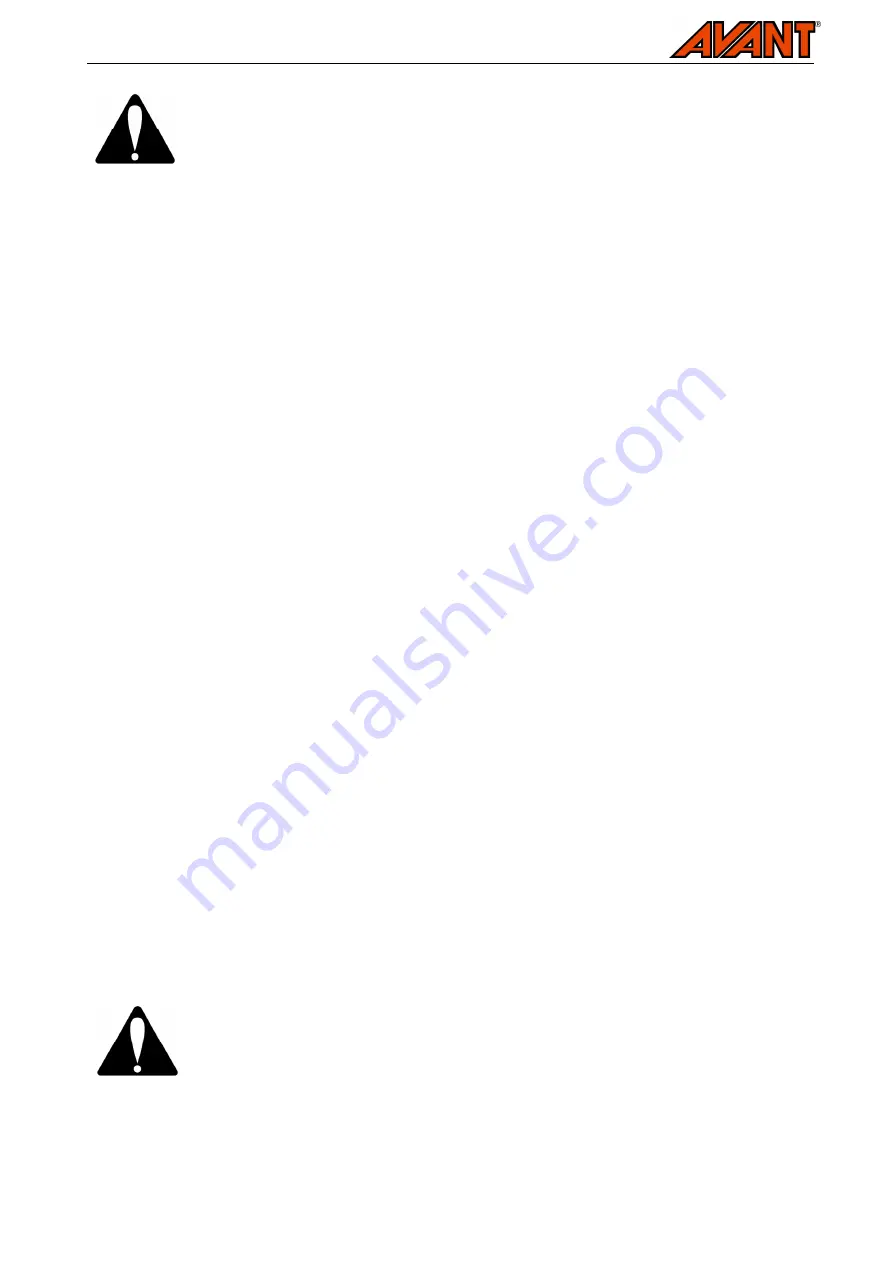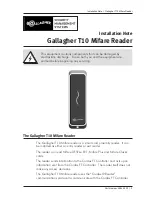
9(14)
Ensure that the loader can handle the load intended to be moved. Notice the risk of the
loader tipping forward when material is being lifted from a high level. Do not drag the
filled attachment from a high level.
Fill the sand / salt spreader only when it is firmly attached to the loader. If you fill the spreader with some
other equipment or by hand, stop the spreader before going near it. Lower the equipment on the ground and
observe that it might tilt forward, even if attached. Avoid staying directly in front of the spreader.
The spreaders work the best with crushed rock or gravel that consists of homogenous max. 6 mm pebbles
and which is intended for sanding. Very fine sand may not proceed through the sand spreader rollers rapidly
enough, which results in inadequate sanding speed, or unsuccessful spreading. Clogged or frozen gravel or
dense sand may block the spreader regardless of the mixing axle on the spreader. When finished sanding,
do not leave material in the spreader, as the material may clod or freeze and using the spreader the next
time may be more difficult. Moreover, material left in the spreader may increase the risk of the unattached
spreader getting tipped over.
6.2.
Using the sand / salt spreader
The spreader is operated with the auxiliary hydraulics control lever on the loader. The spreader is stopped by
releasing the control lever or by shutting down the loader, and the attachment will stop. There is no separate
stop switch on the spreader. If your loader is equipped with the optional electric joystick (available on 600
and 700 series loaders), the precise control of the spreading is easy by using the electric switches on the
joystick.
When using the spreader, keep it in an upright position at a suitable height from the ground, so that the lower
edge of the spreader or the spreading axles never hit the ground, or any obstacles, at any conditions. The
rubber lip plate under the spreader or the spreading axle itself may get damaged if hit, resulting in uneven
spreading of material, or leading to more serious damage to the spreader. See section 7.2 on page 10 for
more information about the rubber lip and the sweep plate.
6.3.
Adjusting the spreader
The spreader is used with one or two loader auxiliary hydraulic pumps, depending on the model of the
loader, as well as the driving speed, the settings of the spreader and the type of the material being spread.
Generally more fine-grained material will require greater auxiliary hydraulic flow. The adjustable lower plate
should be set according the type of the material being spread. The tilting of the spreader also slightly affects
the amount of spreaded material.
6.3.1.
Adjustable lower plate
The lower plate of the spreader is adjusted with a pair of chains, which are attached to the spreader frame.
The adjusting chains are fitted to the lower plate through springs. When more sand is wanted, or a larger
grain material is being used, the springs should be loosened. Adjust both of the chains equally and by little at
a time to find the suitable setting. Observe that releasing the chains completely may lead to the sand being
drained from the spreader.
The springs of the spring-adjusted spreader are tensioned. Grasp the chain with a
secure grip by both hands and adjust the chains with care, adjusting one chain at a
time.
The setting of the lower plate is adjusted according to the desired amount of material, driving style and the
loader model. The best adjustments according to loader and specific material type may be found by testing
the setting and adjusting as necessary.































